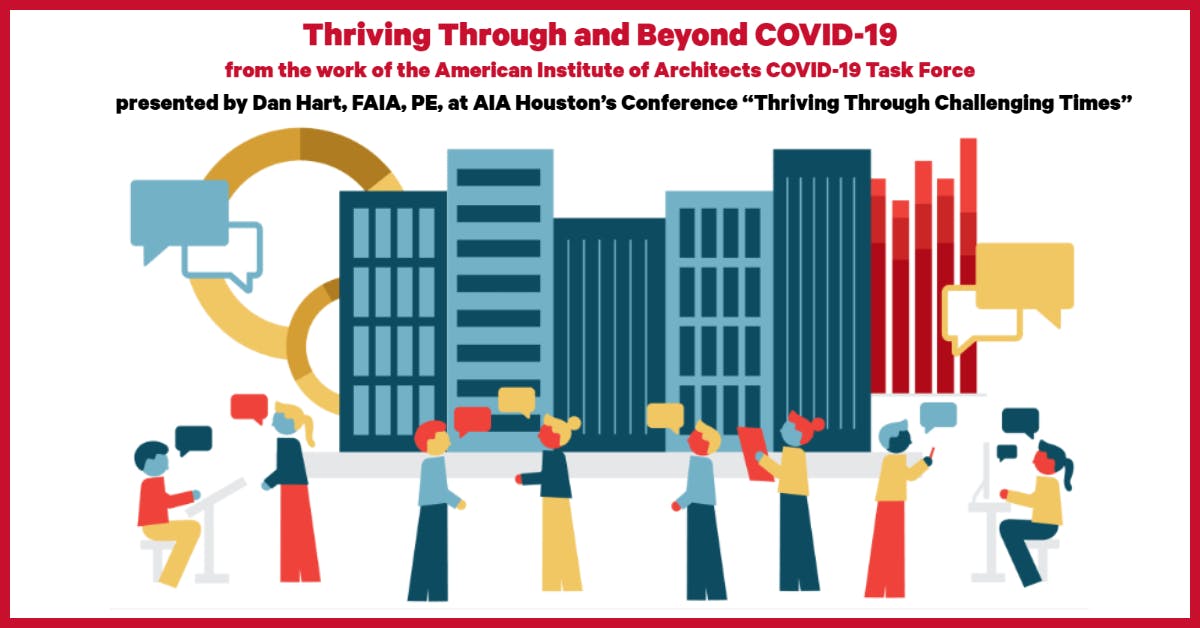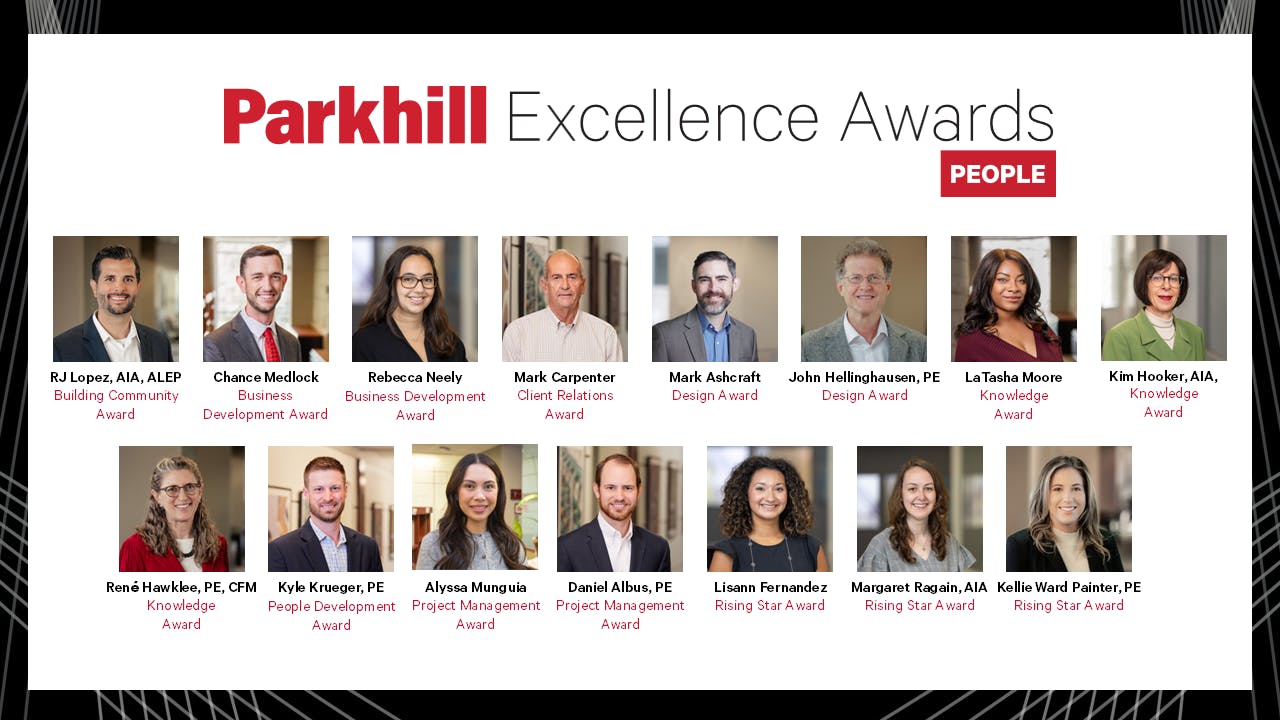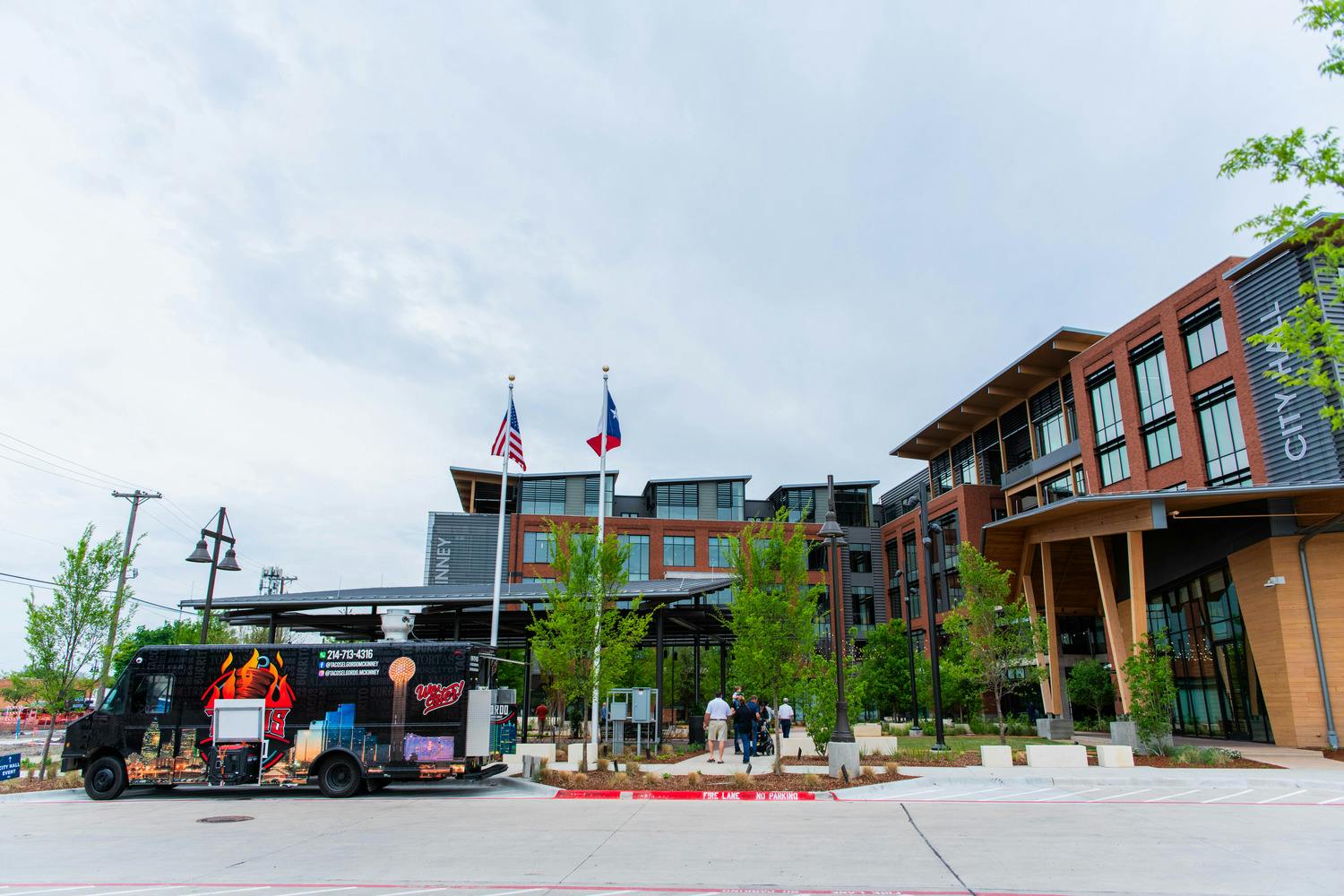Thriving Through and Beyond COVID-19
Category: Architecture
Written By: Valerie Edgren
Date: July 14, 2020


Dan Hart, FAIA, PE, is a national AIA board member and is co-chair of the AIA’s COVID-19 Business Task Force. He is the past chair of the AIA’s Board Knowledge Committee and is currently chair of the Board’s Public Outreach Committee. He was the AIA National Strategic Council moderator, was the 2017 Texas Tech University College of Architecture Distinguished Alumnus and was the founding president of the College of Architecture Design Leadership Alliance at Texas Tech University. He serves as the Executive Vice President of Architecture for Parkhill. He was one of the speakers at the recent “AIA Houston Thriving Through Challenging Times,” a virtual conference for architecture firms.
Wisdom for architecture firms looking to survive and flourish during the COVID-19 pandemic is reflected in the Stockdale Paradox.
Dan Hart, FAIA, PE, drew on the paradox at the virtual AIA Houston conference “Thriving Through Challenging Times,” explaining that Admiral Jim Stockdale was a prisoner for eight years during the Vietnam War. Despite the conditions, Stockdale maintained responsibility for his men, trying to maximize their chances of coming out of the ordeal whole, physically and mentally.
Later, he was awarded the Medal of Honor. Jim Collins, author of the book Good to Great, talked to Stockdale about his prisoner-of-war experience and asked, “Who didn’t make it out?”
“Oh, that’s easy,” Stockdale said. “It was the optimists. They were the ones who said, ‘We’re going to be out by Christmas.’ And Christmas would come, and Christmas would go.” After many disappointments, “they died of a broken heart.”
Collins said the Stockdale Paradox is “to never confuse faith that you will prevail in the end – which you can never afford to lose – with the discipline to confront the most brutal facts of your current reality, whatever they might be.”
Some focus on the positive so much that they become blind to the reality, Hart said. Others tend to obsess about the realities to the extent that it paralyzes them into inaction. Some vacillate between the two approaches.
“The key is not to be blindly optimistic, but to be confident despite confronting the brutal picture,” Hart said.
What the Task Force is Hearing
The AIA Task Force dedicated to firms’ viability through the pandemic has found that many A&E firms are reporting strong remote work productivity though digital meeting fatigue is a common complaint. Some firms are returning to their offices where flexibility in office protocols and standards of safety are critical for creating success in the current norm. Effective communications are characteristic of thriving firms as is a spirit of collaboration and cooperation in multi-office firms. Mentoring younger professionals is difficult but seems to be happening.
Many smaller firms are struggling but most, at this point, have not gone under. Almost 70% percent of architecture firms polled said they have received funding through the Payroll Protection Plan. The memory of the 2008-09 recession is clear for many clients which means they tend toward relative calm in this crisis.
Now, a few months after the pandemic hit the U.S., clients are interested in touchless technologies, new antimicrobial materials, virtual and augmented reality both in the design and construction phases of work. Expertise, especially as it applies to the virus, is at a premium. Flexibility in project types and spaces is a need, with an increased focus on public spaces.
Clients are asking questions about how schools, churches, and offices will be occupied. They are asking to make their existing space adapt to needs they are facing now.
How Architects Help Clients Persist
Because our main defense against the virus is physical separation, a temptation society will face is to sprawl, in buildings and in communities, Hart said. Communal density is too valuable to society. Society needs to find better answers than to sprawl.
“We need to distinguish between density and overcrowding,” he explained.
The bubonic plague in the Middle Ages helped the world see that cramped living can have negative effects. Pandemics have also helped bring about indoor plumbing, urban planning, and cleanable materials like steel and glass. What responses out of this crisis are responsible?
The term “social distancing” is an unfortunate one, Hart said. We need to be physically separated but social connections need to be intentionally strengthened. How A&E firms reach out to clients is changing, but it is necessary to make human connections. Never underestimate the power of the question “How are you?” That simple, innocent question began the pivotal conversation that resulted in Parkhill helping. a school district harness big data in their pursuit of internet connectivity for their neediest students.
“Crises have a way of revealing our character,” Hart said. “We are design thinkers. This moment may be the defining moment of our lifetimes.”
AIA Expertise
The AIA Task Force’s work resulted in a series of articles recommending architects focus on clients. This work is focused on three key areas: why architects and design matter, business and financial strategies, and construction and shovel-ready project strategies.
Additionally, the AIA Task Force created “Five Steps to Thrive.” Architects naturally have an intrinsic value in improving the quality of life through design. Economic hardship cannot lessen this fact. However, it does present a situation for architects to demonstrate their skillset’s value to clients and potential clients to support future budgets and planning.
“We have ample research to provide the evidence that architects bring positive outcomes to building users – better test scores, better hospital patient outcomes, fewer days in the hospital, lower incidence of obesity and heart disease,” Hart said. “We will emerge. We have something to offer society and we can be better. Let’s make the stories that come out of this crisis worth repeating.”
Additional Resources
- AIA National COVID-19 resources for architects
- Texas Society of Architects COVID-19 resources for architects
COVID-19 Resources
- Resources to help firms thrive series from AIA COVID-19 Business Task Force
- AIA Re-occupancy Assessment Tool
- Architects Guide to Business Continuity
- AIA Risk Management resources
- AIA Architectural Billings Index (ABI)


